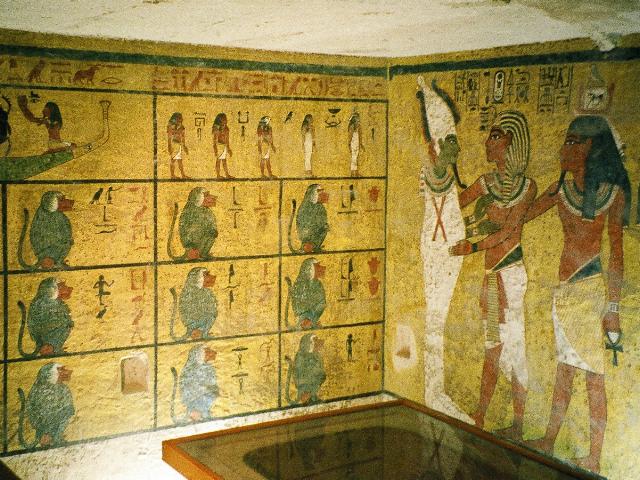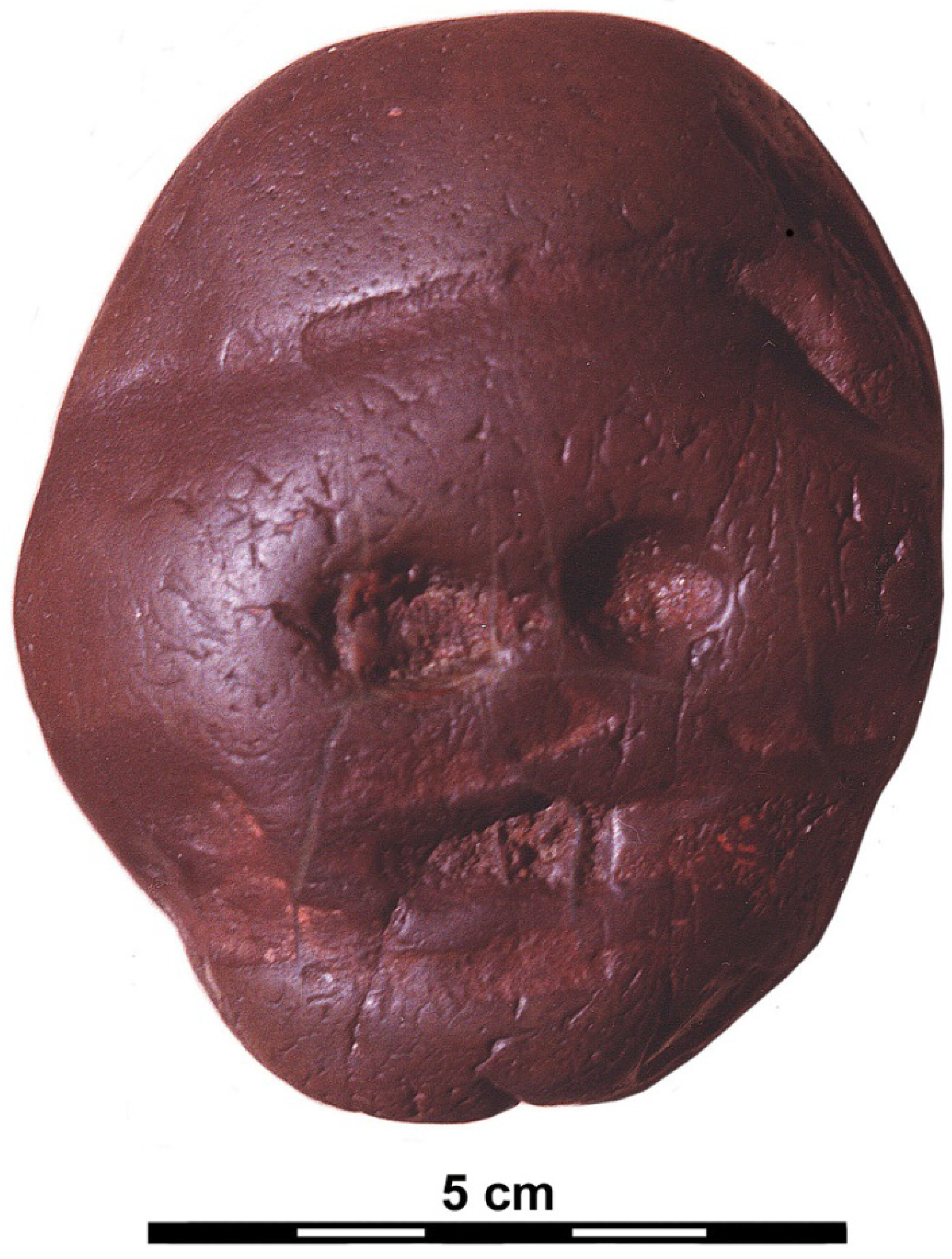|
1925 In Archaeology
Below are notable events in archaeology that occurred in 1925. Explorations Excavations * Kaminaljuyu Mayan site, by Manuel Gamino. * Kültepe in Turkey, by Bedřich Hrozný. * Excavations in Gibraltar by Dorothy Garrod begin (continue to 1926). * October - Tin Hinan Tomb in the Sahara located and opened by Byron Khun de Prorok. * December - Complete excavation of the Great Sphinx of Giza by Émile Baraize begins (continues to 1936). Publications * John Beazley - ''Attische Vasenmaler des rotfigurigen Stils'' * V. Gordon Childe - ''The Dawn of European Civilization''. * Aleš Hrdlička - ''The Old Americans''. Finds * July 13 - " Venus of Dolní Věstonice" at Dolní Věstonice in Moravia. * October 28 - Howard Carter reveals the golden death mask of Tutenkhamun. * Ennigaldi-Nanna's Museum at Ur is discovered by Leonard Woolley. * "Venus of Savignano" near Savignano sul Panaro in Italy. * "Galilee skull" in Mugharet el-Zuttiyeh. * The Aurignacian settlement site ... [...More Info...] [...Related Items...] OR: [Wikipedia] [Google] [Baidu] |
Howard Carter
Howard Carter (9 May 18742 March 1939) was a British archaeologist and Egyptologist who discovered the intact tomb of the 18th Dynasty Pharaoh Tutankhamun in November 1922, the best-preserved pharaonic tomb ever found in the Valley of the Kings. Early life Howard Carter was born in Kensington on 9 May 1874, the youngest child (of eleven) of artist and illustrator Samuel John Carter and Martha Joyce Carter (). His father helped train and develop his artistic talents. Carter spent much of his childhood with relatives in the Norfolk market town of Swaffham, the birthplace of both his parents. Receiving only limited formal education at Swaffham, he showed talent as an artist. The nearby mansion of the Amherst family, Didlington Hall, contained a sizable collection of Egyptian antiques, which sparked Carter's interest in that subject. Lady Amherst was impressed by his artistic skills, and in 1891 she prompted the Egypt Exploration Fund (EEF) to send Carter to assist an Amherst ... [...More Info...] [...Related Items...] OR: [Wikipedia] [Google] [Baidu] |
Makapansgat Pebble
The Makapansgat pebble or Makapansgat cobble (wikt:circa, ca. 3,000,000 Before Present, BP) is a pebble with natural chipping and wear patterns that make it look like a crude rendition of a human face, in fact at least two possible faces. Some scholars argue that it is the oldest known manuport. Description The Makapansgat pebble is a 260-gram, 8.3 cm long, 7 cm wide, and 3.8 cm thick, reddish-brown jasperite Cobble (geology), cobble. The pebble was found in 1925 in a dolomite cave in the Makapansgat, Makapan Valley north of Mokopane, South Africa by a local school teacher Wilfred Eitzman. Importantly, it was found at 4.8 km/3 miles from the nearest possible natural source (or 32 km/20 miles according to Dart). The site also contained bones of Australopithecus (later this attribution was widened to australopithecines or other early hominins). The pebble and all its markings are formed naturally by geological processes, no traces of artificial modification have been detected. Int ... [...More Info...] [...Related Items...] OR: [Wikipedia] [Google] [Baidu] |
Kent
Kent is a county in South East England and one of the home counties. It borders Greater London to the north-west, Surrey to the west and East Sussex to the south-west, and Essex to the north across the estuary of the River Thames; it faces the French department of Pas-de-Calais across the Strait of Dover. The county town is Maidstone. It is the fifth most populous county in England, the most populous non-Metropolitan county and the most populous of the home counties. Kent was one of the first British territories to be settled by Germanic tribes, most notably the Jutes, following the withdrawal of the Romans. Canterbury Cathedral in Kent, the oldest cathedral in England, has been the seat of the Archbishops of Canterbury since the conversion of England to Christianity that began in the 6th century with Saint Augustine. Rochester Cathedral in Medway is England's second-oldest cathedral. Located between London and the Strait of Dover, which separates England from mainla ... [...More Info...] [...Related Items...] OR: [Wikipedia] [Google] [Baidu] |
Aylesford-Swarling Pottery
Aylesford-Swarling pottery is part of a tradition of wheel-thrown pottery distributed around Kent, Essex, Hertfordshire and Bedfordshire and named after two cemeteries in Kent dating to the 1st century BC. The tradition reached Britain with the so-called Belgic invasion of the 1st century BC and may also be loosely termed Belgic ware. Whether there was actual migration, or how much, or whether "this culture developed because of the proximity of Roman trading systems, rather than a wholesale movement of continental peoples" remains the subject of debate. A cemetery of the British Iron Age discovered in 1886 at Aylesford in Kent was excavated under the leadership of Sir Arthur Evans, and published in 1890. With the later excavation by others at Swarling not far away (discovery to publication was 1921–1925) this is the type site for Aylesford-Swarling pottery or the Aylesford-Swarling culture, which included the first wheel-made pottery in Britain. Evans' conclusion that the sit ... [...More Info...] [...Related Items...] OR: [Wikipedia] [Google] [Baidu] |
Saxony-Anhalt
Saxony-Anhalt (german: Sachsen-Anhalt ; nds, Sassen-Anholt) is a state of Germany, bordering the states of Brandenburg, Saxony, Thuringia and Lower Saxony. It covers an area of and has a population of 2.18 million inhabitants, making it the 8th-largest state in Germany by area and the 11th-largest by population. Its capital is Magdeburg and its largest city is Halle (Saale). The state of Saxony-Anhalt was formed in July 1945 after World War II, when the Soviet army administration in Allied-occupied Germany formed it from the former Prussian Province of Saxony and the Free State of Anhalt. Saxony-Anhalt became part of the German Democratic Republic in 1949, but was dissolved in 1952 during administrative reforms and its territory divided into the districts of Halle and Magdeburg. Following German reunification the state of Saxony-Anhalt was re-established in 1990 and became one of the new states of the Federal Republic of Germany. Saxony-Anhalt is renowned for its ri ... [...More Info...] [...Related Items...] OR: [Wikipedia] [Google] [Baidu] |
Breitenbach (archaeological Site)
The archaeological site near the village of Breitenbach in Saxony-Anhalt, Germany is an important open-air settlement that dates to the period of initial colonization of Europe by anatomically modern humans. The occupations date to the early Upper Palaeolithic and more specifically belong to the Aurignacian cultural complex. Breitenbach is currently the biggest open-air settlement site in western Eurasia dating to this time period. Overlying the Palaleolithic deposits are the remains of a younger settlement that has been dated to the Neolithic. Palaeolithic settlement Significance The open-air site Breitenbach is located at the northern boundary of the Aurignacian oikumene, from which only few sites are currently known. It is also one of the few Aurignacian open-air sites known from Central Europe – knowledge about modern human spatial behaviour and subsistence practices during the Aurignacian derives primarily from cave sites. The extent of the settlement is estimated ... [...More Info...] [...Related Items...] OR: [Wikipedia] [Google] [Baidu] |
Aurignacian
The Aurignacian () is an archaeological industry of the Upper Paleolithic associated with European early modern humans (EEMH) lasting from 43,000 to 26,000 years ago. The Upper Paleolithic developed in Europe some time after the Levant, where the Emiran period and the Ahmarian period form the first periods of the Upper Paleolithic, corresponding to the first stages of the expansion of ''Homo sapiens'' out of Africa. They then migrated to Europe and created the first European culture of modern humans, the Aurignacian. An Early Aurignacian or Proto-Aurignacian stage is dated between about 43,000 and 37,000 years ago. The Aurignacian proper lasts from about 37,000 to 33,000 years ago. A Late Aurignacian phase transitional with the Gravettian dates to about 33,000 to 26,000 years ago. The type site is the Cave of Aurignac, Haute-Garonne, south-west France. The main preceding period is the Mousterian of the ''Neanderthals''. One of the oldest examples of figurative art, the Venus ... [...More Info...] [...Related Items...] OR: [Wikipedia] [Google] [Baidu] |
Mugharet El-Zuttiyeh
Mugharet el-Zuttiyeh ("Cave of the Robbers") is a prehistoric archaeological site in Upper Galilee, Israel. It is situated from the Nahal Amud outlet, approximately above the wadi bed ( below sea level). It was found to house a fossil today known as the "Galilee skull" or "The Yabrudian Man". History Discovered in 1925, the skull was the first fossilised archaic human found in Western Asia. Together with the remains found at Es Skhul and the Wadi el-Mughara Caves, this find was classified in 1939 by Arthur Keith and as ''Palaeoanthropus palestinensis''. Today its taxonomy is that of ''Homo heidelbergensis''. Zuttiyeh cave is at the opening of a limestone ravine where Nahal Amud turns eastward, above a smaller cave known as Mugharet el-Emireh (Cave of the Princess). The cave was excavated from 1925 to 1926 by Francis Turville-Petre. It was the first paleontological excavation in the region. Turville-Petre discovered a skull, referred to as the ''Galilee Skull'', that was ini ... [...More Info...] [...Related Items...] OR: [Wikipedia] [Google] [Baidu] |
Savignano Sul Panaro
Savignano sul Panaro ( Modenese: ; Western Bolognese: ) is a ''comune'' (municipality) in the Province of Modena in the Italian region Emilia-Romagna, located about west of Bologna and about southeast of Modena. Savignano sul Panaro borders the following municipalities: Guiglia, Marano sul Panaro, San Cesario sul Panaro, Spilamberto, Valsamoggia, Vignola Vignola (Emilian language#Dialects, Modenese: ; Bolognese dialect, Bolognese: ) is a city and ''comune'' in the province of Modena (Emilia-Romagna), Italy. Its economy is based on agriculture, especially fruit farming, but there are also mechani .... References External links Official website Cities and towns in Emilia-Romagna {{EmiliaRomagna-geo-stub ... [...More Info...] [...Related Items...] OR: [Wikipedia] [Google] [Baidu] |
Venus Of Savignano
The Venus of Savignano is a Venus figurine made from soft greenstone ( serpentine) dating back to the Upper Paleolithic, which was discovered in 1925 near Savignano sul Panaro in the Province of Modena, Italy. With in height, in width and in depth, and with a weight of , it is one of the largest known VenusesMargherita Mussi, ''Earliest Italy. An Overview of the Italian Paleolithic and Mesolithic'', Kluwer Academic/Plenum Publishers, New York 2001, p. 262. among the about 190 dated to the Upper Paleolithic in Europe and Siberia. With a proposed dating of 25,000–20,000 years ago, it is considered one of the earliest expressions of art in Italy.''La Dea di Savignano sul Panaro'', Museo della Venere e dell'Elefante, Savignano 2014 (brochure) History The statuette was unearthed in 1925 by a farmer, Olindo Zambelli, who was digging outside his stable in the locality of ''Prà Martino'', under the ''frazione'' of ''Mulino'', itself within the ''comune'' of Savignano sul Panar ... [...More Info...] [...Related Items...] OR: [Wikipedia] [Google] [Baidu] |
Leonard Woolley
Sir Charles Leonard Woolley (17 April 1880 – 20 February 1960) was a British archaeologist best known for his Excavation (archaeology), excavations at Ur in Mesopotamia. He is recognized as one of the first "modern" archaeologists who excavated in a methodical way, keeping careful records, and using them to reconstruct ancient life and history. Woolley was knighted in 1935 for his contributions to the discipline of archaeology. He married the British archaeologist Katharine Woolley. Early life Woolley was the son of a clergyman, and was brother to Geoffrey Harold Woolley, Victoria Cross, VC, and George Cathcart Woolley. He was born at 13 Southwold Road, Upper Clapton, in the modern London Borough of Hackney and educated at St John's School, Leatherhead and New College, Oxford. He was interested in excavations from a young age. Career In 1905, Woolley became assistant of the Ashmolean Museum, Oxford. Volunteered by Arthur Evans to run the excavations on the Coria (Corbridge), ... [...More Info...] [...Related Items...] OR: [Wikipedia] [Google] [Baidu] |



.jpg)


_Q73536.jpg)